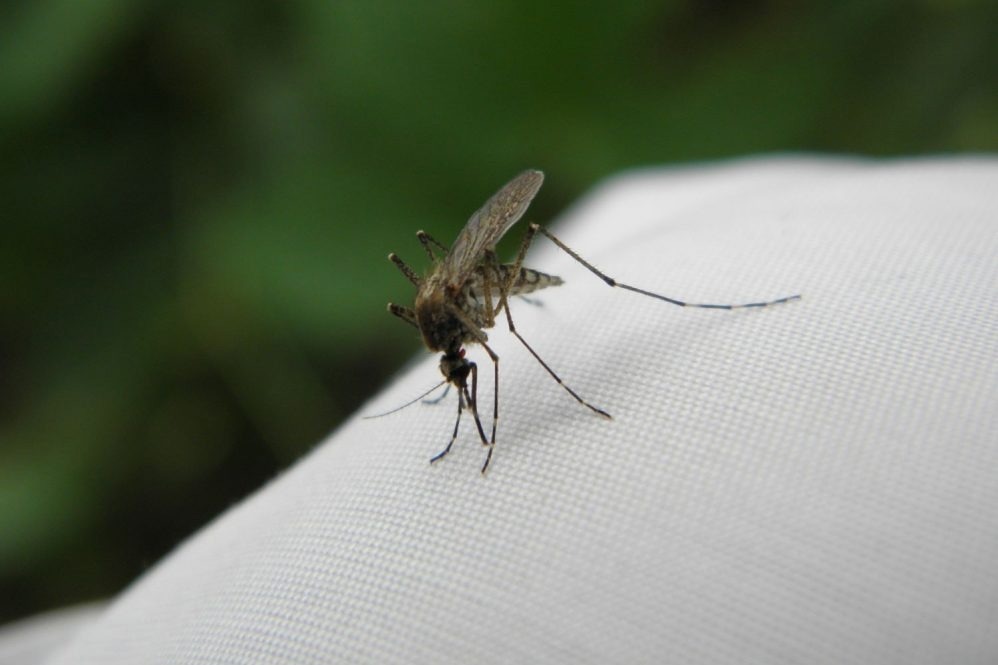Reviewed by Danielle Ellis, B.Sc.Jun 7 2023
Connecticut Veterinary Medical Diagnostic Laboratory (CVMDL) researchers from UConn’s College of Agriculture, Health, and Natural Resources determined the genetic makeup of West Nile virus strains reported in an alpaca and a crow.

Image Credit: Pixabay
These findings have been published in the journal Frontiers in Veterinary Science.
In 2021, the CVMDL received eight cases of West Nile virus for diagnosis: seven birds, both domestic and wild, and one alpaca.
We decided to pursue some research avenues through these diagnostic cases because we had an interesting cohort of West Nile cases that had come through that fall.”
Natalie Tocco, Resident, Anatomic Pathology, Department of Pathobiology and Veterinary Science, University of Connecticut
The alpaca from Massachusetts and the crow from Connecticut had the most virus in their systems at the time of diagnosis out of the eight instances.
The scientists were interested in examining if there were genetic differences between the viruses in these two cases because they arose in different species in different states.
After sequencing the viruses’ complete genomes, the researchers examined them with existing data. The West Nile virus in the crow was determined to be comparable to the virus identified in a mosquito and birds in New York between 2007 and 2013.
Between 2012 and 2016, the virus identified in the alpaca was similar to West Nile viruses detected in mosquitos in New York, Texas, and Arizona.
[These findings] show the variety of the strains that are circulating and that can really alter what we see in the populations of what mosquitoes are dragging around in different areas.”
Natalie Tocco, Resident, Anatomic Pathology, Department of Pathobiology and Veterinary Science, University of Connecticut
When researchers evaluate how mosquitos and birds move around the country, this knowledge can help scientists forecast where different strains of the virus may develop.
The researchers concluded that the genetic makeup of these viruses differs, implying that vector-host feeding preferences are most likely driving viral transmission. Different mosquito species prefer different animal hosts to feed on. As a result, a variety of animals become infected with West Nile viruses.
Recognizing the genetic makeup of the viruses could help researchers, diagnosticians, and veterinarians identify which animals are more susceptible to the virus, the severity of the disease, and what symptoms might appear.
It could open up a whole can of worms. In reality, I think we need to do more research on that to see what we’re finding and what kinds of patterns we should expect in terms of the different strains and what kind of diseases we see with those.”
Natalie Tocco, Resident, Anatomic Pathology, Department of Pathobiology and Veterinary Science, University of Connecticut
The West Nile virus was discovered in New York City in 1999 and swiftly spread across the country. It was present in Connecticut by the year 2000. West Nile has remained a public health hazard in the United States since then.
The CVMDL released one of the first articles on West Nile virus in the United States in the early 2000s.
“Aside from having it here in Connecticut and being a public health concern, it also brings more variety to the lab to bring West Nile research back to the forefront through the use of our diagnostic cases,” Tocco adds.
While this research only looked at two cases, the researchers are working on another paper that will look at the exact symptoms from all eight cases.
The CVMDL receives a varying number of West Nile virus infections each year. They tend to see more instances during extremely wet summers, which are great for mosquitoes. They identified 30 cases in 2022.
Birds, particularly corvids such as crows, ravens, and jays, are common carriers of the West Nile virus.
Seizures, inability to stand, neurological indications, and ocular signs are the most common West Nile symptoms in these animals. Eye symptoms are especially common in raptors such as eagles, owls, and hawks. The virus may also cause heart disease in raptors.
“There’s a variety of lesions we can see with West Nile so it’s more about being proactive with these diagnostic cases at certain times of year and keeping on high alert because it’s not just the nervous system signs in some animals,” Tocco notes.
West Nile viruses are most frequent from August to October. However, as Connecticut’s climate warms, the range of the West Nile expands. Tocco claims to have identified West Nile cases as late as November and as early as May.
Tocco concludes, “Those might be the anomalies but those might be a predictor of what we can expect in the future. And to not put the blinders on to the time of year, but expand that window based on what we’re seeing diagnostically.”
Source:
Journal reference:
Hyeon, J.-Y., et al. (2023). Whole genome sequencing and phylogenetic analysis of West Nile viruses from animals in New England, United States, 2021. Frontiers in Veterinary Science. doi.org/10.3389/fvets.2023.1085554.